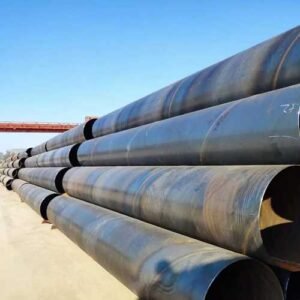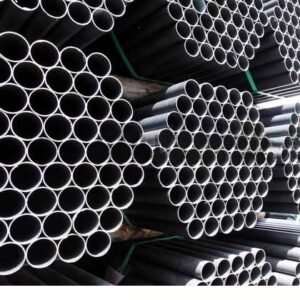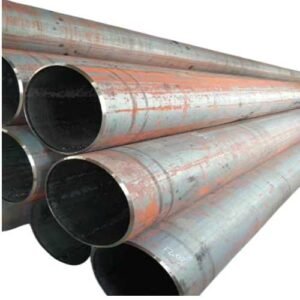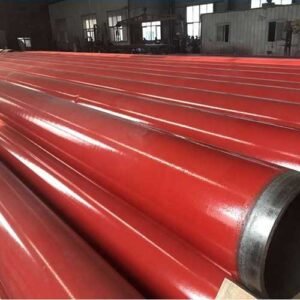Low-temperature carbon steel (LTCS) pipes are special. They handle very cold liquids. For example, they move LPG, ethane, propane, and natural gas. These pipes work well even at -50°C. They keep their strength and flexibility.
What is a Low Temperature Carbon Steel Pipe?
An LTCS pipe is built for cold. It has more manganese and less carbon. This design keeps it strong and flexible in freezing conditions. So, it’s perfect for oil and gas. It’s also great for petrochemical and cryogenic uses. Using these pipes makes things safer. It stops damage or failure in cold weather. Their good qualities make them a top pick for cold projects.

Low-Temperature Carbon Steel Pipes Applications
- Oil and Gas Industry
The oil and gas industry is tough. LTCS pipes are very important here. They move oil and gas from wells to processing plants. Regular pipes can break in extreme heat and pressure. This causes danger and delays. But LTCS pipes are made for these conditions. The Low-Temperature Carbon Steel Pipe is a key part of the industry.
These steel pipes are strong. They also fight rust well. This is vital because pipelines meet corrosive stuff. Things like hydrogen sulfide and carbon dioxide are common. Good rust resistance keeps oil and gas pipelines safe for a long time. It lowers the risk of leaks.
- Chemical Processing Industry
The chemical industry needs strong LTCS pipes too. These steel pipes move chemicals and dangerous materials. They handle high temperatures and pressures. Normal pipes cannot do this job. They get damaged or corroded quickly.
LTCS pipes are built for harsh chemical plants. They resist corrosion very well. This is important. Pipelines often touch strong chemicals. These chemicals can cause rust and damage.
These steel pipes also stay strong in very cold places. This makes them good for cryogenic uses. Cryogenic means things are cooled to super-low temperatures. This happens for science or industry.
- Power Generation Industry
The power industry uses many LTCS pipes. Especially where heat and pressure are high. These pipes carry steam and other liquids in power plants. They face tough conditions. Regular steel pipes would break fast.
LTCS pipes are made for these hard conditions. They are a key part of power plants. They stay strong even when it’s very hot. This makes sure power plants work safely and reliably.
- Aerospace Industry
The aerospace industry uses LTCS pipes in many ways. These steel pipes move super cold liquids. For example, liquid oxygen, nitrogen, and hydrogen. These are fuels for rockets and spacecraft. The pipes also help make rocket engines. They move and store these cold fuels.
How to Choose the Right Low-Temperature Carbon Steel Pipe?
- Figure Out the Temperature Range
First, know the pipeline’s working temperature. LTCS usually works from -50°C to 100°C. If your pipeline gets colder, use austenitic stainless steel. It works better in extreme cold. Also, pick the right grade, wall thickness, and size. These must match the temperature and pressure. This keeps things safe and efficient.
- LTCS Material Choice
LTCS has two main types: Grade 1 and Grade 3. Grade 1 is used most often. It is strong and tough in the cold. Grade 3 is for temperatures below 50°C. When picking, think about how it will be used. Think about the temperature range. Also, consider if it will rust.
- Pipe Making Rules
Pipe making rules are important. They help you pick the right steel pipe. ASTM A333 is a known rule. It covers seamless and welded pipe making. This rule tells you about Grade 1 and Grade 3 LTCS pipes. It includes their chemical and physical traits. It also covers extra rules. For example, testing and heat treatment.
- Wall Thickness and Pipe Size
The wall thickness and size of the steel pipe matter. The wall needs to be thick enough. It prevents breaks or damage from the cold. Pick the pipe size based on how much liquid flows. Also, think about the liquid’s thickness. And what the process needs. Bigger pipes might lower pressure. Smaller pipes might make liquid flow better.
- Resisting Rust
Rust is a common problem for steel pipes. It shortens their life. LTCS pipes can also rust. You must check if they can resist rust for your job. Often, coatings are put on the pipes. This helps them fight rust better.
Picking the correct LTCS pipe is key. It makes sure cold liquids move safely. Think about the temperature. Think about the material. Think about the pipe-making rules. Also, think about thickness, size, and rust resistance. Choosing the right LTCS pipe makes it work best. It also makes the pipelines last longer.
Choose the Best Carbon Steel Pipe Supplier:
JSFITTINGS has been supplying steel pipes and fittings for 38 years. We always go above and beyond.
We offer good service, quick delivery, and fair prices. This helps you earn more profit.
Make buying Chinese steel pipes easy and fast. Contact us now.
Email: info@jssteelpipes.com
WhatsApp: +8618003119682






